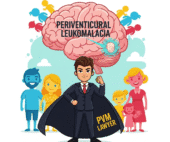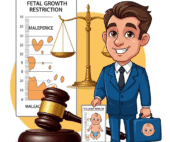google.comPuberty and adolescence are transformative periods marked by significant physical, emotional, and social changes. For individuals with Cerebral Palsy (CP) and their families, this stage can present unique considerations and require proactive preparation. Understanding these changes and addressing them with sensitivity and open communication is crucial for fostering a positive and healthy transition into adulthood. This guide outlines key areas to anticipate and plan for as your child with CP approaches and navigates puberty and adolescence.
Understanding the Unique Aspects of Puberty with CP
While the fundamental biological processes of puberty remain the same, CP can influence how these changes manifest and are experienced:
- Physical Changes and Motor Skills: Hormonal shifts can impact muscle tone, spasticity, and motor control. Existing physical limitations may present new challenges with personal hygiene, dressing, and mobility as the body changes.
- Sensory Sensitivities: Increased sensory awareness during puberty can amplify existing sensitivities to touch, textures, or smells, potentially affecting comfort with new hygiene products or clothing.
- Communication and Understanding: Adolescents with communication challenges may need additional support to understand and express their feelings and experiences related to puberty.
- Body Image and Self-Esteem: Navigating the typical body image concerns of adolescence can be compounded by physical differences related to CP. Building self-acceptance and positive self-esteem is paramount.
- Social Interactions and Peer Relationships: Forming and maintaining peer relationships can be influenced by communication abilities, mobility limitations, and self-confidence. Puberty often brings new social dynamics and expectations.
- Sexuality and Relationships: Addressing questions about sexuality, relationships, and personal boundaries in an age-appropriate and sensitive manner is essential.
- Independence and Self-Advocacy: Adolescence is a time for increasing independence. Individuals with CP may require tailored strategies and support to develop self-advocacy skills.
Key Areas to Prepare For and Address
Proactive preparation across several domains can help ensure a smoother transition through puberty and adolescence:
1. Physical Changes and Hygiene
Discuss the physical changes of puberty in an accessible way. Adapt hygiene routines and provide necessary support and adaptive equipment for tasks like showering, managing menstruation (for females), and personal grooming. Occupational therapists can offer valuable guidance.
2. Emotional and Social Development
Create open lines of communication to discuss the emotional ups and downs of adolescence. Address topics like peer pressure, social media, and navigating social situations. Encourage participation in activities that foster social interaction and build confidence.
3. Sexuality and Relationships Education
Provide age-appropriate and honest information about puberty, sexuality, relationships, and personal boundaries. This may require adapted communication methods and visual aids. Resources from organizations specializing in disability and sexuality can be helpful.
4. Body Image and Self-Esteem
Focus on celebrating strengths and abilities. Encourage self-acceptance and a positive body image. Address any negative self-talk and promote self-compassion. Connect with peer support groups where individuals with CP can share experiences.
5. Independence and Self-Advocacy Skills
Identify areas where your child can develop greater independence in daily living skills. Encourage self-advocacy by teaching them how to express their needs and preferences effectively. Occupational and speech therapists can play a key role in this area.
6. Medical and Therapeutic Management
Monitor how puberty may be affecting muscle tone, spasticity, and other CP-related symptoms. Work with medical professionals to adjust medications or therapies as needed. Plan for the transition to adult healthcare providers.
7. Puberty-Related Medical Considerations
Be aware of potential puberty-related medical issues that may be more prevalent or require specific management in individuals with CP, such as changes in seizure frequency or scoliosis progression. Maintain regular communication with medical specialists.
8. Planning for the Future (Transition to Adulthood)
Begin thinking about post-adolescence goals, including education, vocational training, independent living options, and long-term support needs. This early planning can help ensure a smoother transition into adulthood.
Strategies for Supporting Your Teenager with CP
Providing effective support during this time involves a combination of understanding, communication, and adaptation:
- Open and Honest Communication: Create a safe and non-judgmental space for your teenager to ask questions and express their feelings.
- Active Listening: Truly listen to their concerns and perspectives, even if they differ from your own.
- Respect for Privacy: As they mature, respect their need for privacy and increasing independence.
- Focus on Abilities: Emphasize their strengths and celebrate their achievements.
- Adaptations and Support: Provide necessary adaptations and support to facilitate independence in hygiene, dressing, and other daily tasks.
- Connect with Peer Support: Encourage connection with other teenagers with CP through support groups or online communities. Sharing experiences can be incredibly validating.
- Professional Guidance: Seek guidance from therapists, counselors, and medical professionals experienced in working with adolescents with disabilities. Resources from CP Family Help can offer valuable connections.
- Patience and Understanding: Remember that navigating puberty and adolescence is a journey, and there will be ups and downs. Offer consistent patience and understanding.
- Empowerment and Choice: Provide opportunities for your teenager to make choices and have control over aspects of their life.
- Celebrate Individuality: Recognize and value their unique personality and interests.
Conclusion: Embracing Growth and Change
Preparing for puberty and adolescence with Cerebral Palsy requires understanding the unique interplay between typical teenage development and the specific challenges and strengths associated with CP. By fostering open communication, providing necessary adaptations and support, and focusing on empowerment and self-acceptance, families can help their teenagers with CP navigate this transformative period with confidence and embrace the exciting journey towards adulthood.
Frequently Asked Questions (FAQ)
- How can I talk to my child with CP about the physical changes of puberty? Use clear, simple language and visual aids if needed. Be honest and open, and answer their questions directly. Social stories or adapted books about puberty can also be helpful. Consult with therapists for communication strategies tailored to your child’s needs.
- What are some strategies for managing increased spasticity during puberty? Monitor changes in muscle tone and spasticity. Work closely with your child’s neurologist or rehabilitation physician to adjust medications, therapies, or bracing as needed. Regular stretching and exercise are also important.
- How can I support my teenager with CP in developing healthy relationships? Provide opportunities for social interaction, discuss healthy relationship dynamics, and address questions about sexuality and boundaries in an age-appropriate way. Peer support groups can also offer valuable connections.
- What resources are available to help teenagers with CP learn about sexuality and personal safety? Organizations specializing in disability and sexuality offer adapted educational materials, workshops, and online resources. Your child’s therapists or counselors may also have recommendations.
- How can I help my teenager with CP build self-esteem and a positive body image? Focus on their strengths and abilities, celebrate their achievements, and encourage self-acceptance. Help them connect with positive role models and peer support groups. Address any negative self-talk and promote self-compassion.
- What are some ways to promote independence for teenagers with CP? Identify areas where they can take on more responsibility, provide necessary adaptations and assistive technology, and teach self-advocacy skills. Break down tasks into smaller steps and offer encouragement and positive reinforcement.
- When should we start planning for the transition to adult healthcare for my child with CP? It’s generally recommended to begin discussing the transition to adult healthcare in early to mid-adolescence. This allows ample time to identify adult providers, understand insurance changes, and involve your child in the process.




